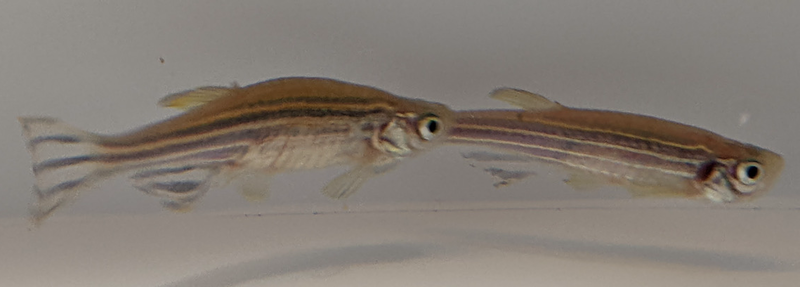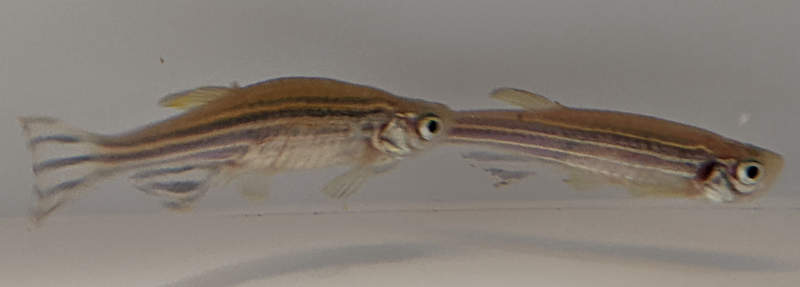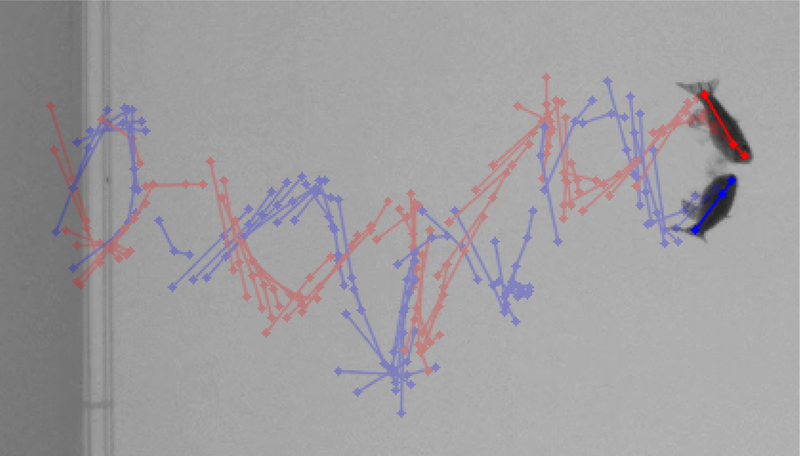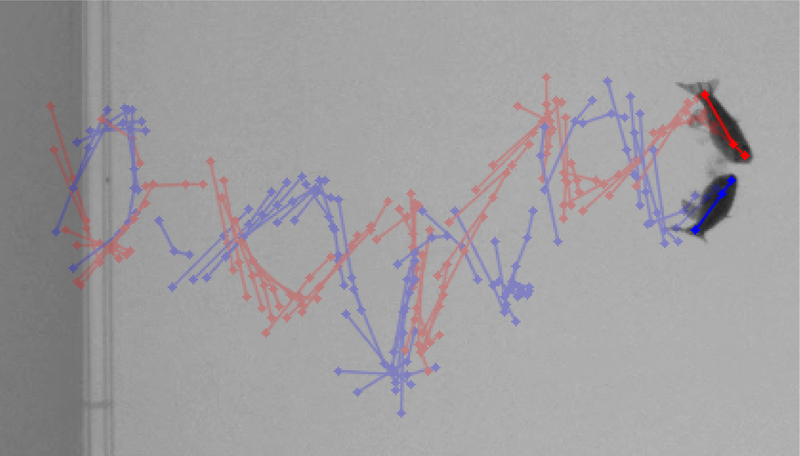Analysis of Zebrafish Smackdown
When two male fish of the same species meet, they typically engage in an aggressive dance to assert dominance—a complex series of maneuvers that includes circling and darting at one another. A research team has now begun to decode these movements by identifying their basic components and how they fit together [1]. From these data, the team was able to determine which fish in any given contest emerged as the winner. The work shows how such methods can be used to decode the “language” of such encounters.
So-called agent-based models, which assume relatively simple interaction rules between individuals, have been widely used to understand patterns of movement in large flocks or swarms of animals. However, one-to-one interactions involved in dominance contests and mating displays can be more nuanced and can change over time. They often seem to follow a fairly fixed set of maneuvers that might be considered variations on a theme. Previously, this repertoire has been largely judged only by eye [2] or by preselecting certain postures for machine-learning methods to focus on [3].
To better characterize and interpret this body language without any initial assumptions, biophysicist Greg Stephens of Vrije Universiteit Amsterdam and the Okinawa Institute of Science and Technology (OIST) in Japan and his co-workers set about using cameras to track the 3D movements of pairs of fighting zebrafish. The researchers also monitored the shapes and orientations of the fish bodies using a machine-learning algorithm to identify three key body points: head, pectoral fin just behind the head (“pec”), and tail.
The observations produced an 18-dimensional representation of the configuration space of the two fish. But Stephens and colleagues found by carefully inspecting the dataset that these movement patterns could be captured using just three parameters: the angle of the pec-tail line of each fish relative to the line joining the two pec positions and the distance between the pecs.
“The start and end of bouts are readily visible from these variables,” Stephens says. When the fish fight, they stay relatively close (small pec–pec distance), while at the end of a fight, the probability distributions for for the two fish become different from one another. The winner mostly maintains an orientation close to zero, facing straight toward its opponent, while the loser turns away from side to side as if intimidated.
This outcome emerges from a set of standardized fight maneuvers, evident as a cluster of points in the reduced 3D dataset. For example, the two fish might circle one another in spiraling trajectories, or they might swim alongside each other as if showing off their full sizes. Some strategies are more associated with the winner and others with the loser, although the loser is not simply beaten into submission: Throughout the bouts the fish do not seem to inflict significant harm on one another. “They are not brutal events, but neither are they entirely symbolic,” Stephens says.
How the fish decide which moves to make remains an open question, but it is likely to involve some kind of cost–benefit assessment. The researchers found, for example, that losers might try to escalate the conflict before conceding defeat—previously dubbed the “desperado effect” [4]—whereas winners might not bother to retaliate, as if deciding it is not worth expending any more energy.
“Stereotyped pairwise fighting occurs throughout the animal kingdom,” Stephens says. “So we think that similar methods of analysis and observation will prove applicable to other organisms and indeed to other evolved patterns of social interaction such as courtship.”
Gonzalo Polavieja of the Champalimaud Foundation in Portugal, who is an expert in the mathematical modeling of behavior, says that the work shows how modern technology is now able to characterize animal movements with a quantitative precision that makes such complex problems “almost like physics.” The basic techniques, developed in his lab and others, are now well established, he says, but “the tricky part is to make them work together in 3D, and the authors seem to have done it to a high standard—they didn’t cut any corners.”
So far, Polavieja cautions, these experiments are in a simplified, non-natural setting that could distort the results: In nature, animals can escape or hide, for example. But “these technologies could now be pushed to explore more natural conditions,” he says.
–Philip Ball
Philip Ball is a freelance science writer in London. His latest book is How Life Works (Picador, 2024).
References
- L. O’Shaughnessy, “Dynamics of dominance in interacting zebrafish,” PRX Life 2, 043006 (2024).
- R. F. Oliveira et al., “Fighting zebrafish: Characterization of aggressive behavior and winner–loser effects,” Zebrafish 8, 73 (2011).
- A. Laan et al., “Zebrafish aggression on the sub-second time scale: Evidence for mutual motor coordination and multi-functional attack manoeuvres,” R. Soc. Open Sci. 5, 180679 (2018).
- A. Grafen, “The logic of divisively asymmetric contests: respect for ownership and the desperado effect,” Anim. Behav. 35, 462 (1987).







